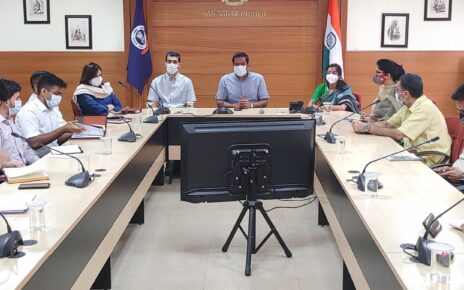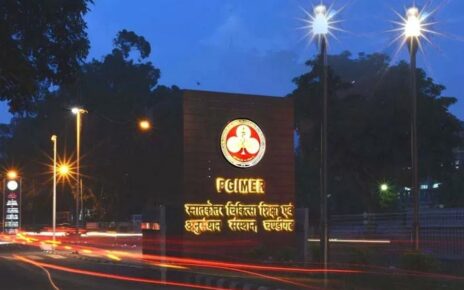On Sunday, Chandigarh experienced its heaviest rainfall in four years for August with a record of 129.7 mm in just one day, which it received 110 mm within three hours from 11:30 am until 2:30 pm. Due to this increased water, level, there was flooding throughout the entire city, resulting in the total suspension of normal life activities.
The temperature dropped sharply from 34 degrees Celsius last Saturday to 27 points 8 degrees Celsius on Sunday as a result of the rain. Despite the drop in temperature, the city’s stormwater drainage system—which is only meant to manage 15-20 mm of rain per hour—was overloaded, causing streets, stores, and residences to flood.
Many residents reported rainwater entering their homes and shops, particularly in low-lying areas and colonies. In Sector 29, the steel market was flooded, causing significant damage to goods. “Our godown sunk in rainwater. We faced huge losses due to the faulty drainage system,” lamented Gulbhashan Goyal, a trader at the steel market.
In response, the Chandigarh Municipal Corporation (MC) sent out engineering crews to remove fallen trees that were impeding traffic and pumping off rainfall. Residents were frustrated with the city’s poor drainage system since many locations remained wet despite their best efforts. “The MC fails to properly clean road gullies. Every year, they have eight months to prepare, but it is the same story every monsoon season,” said Baljinder Singh Bittu, Chairman of the Federation of Sectors Welfare Association Chandigarh (FOSWAC).
The heavy rain also disrupted public events, forcing the postponement of the MC’s annual Teej celebrations scheduled for Sunday evening. Additionally, 13 government schools in Rupnagar district were closed due to flooding.
Residents are preparing for additional possible interruptions as the monsoon is predicted to continue over the next few days, underscoring the pressing need for better infrastructure and drainage in the city.




